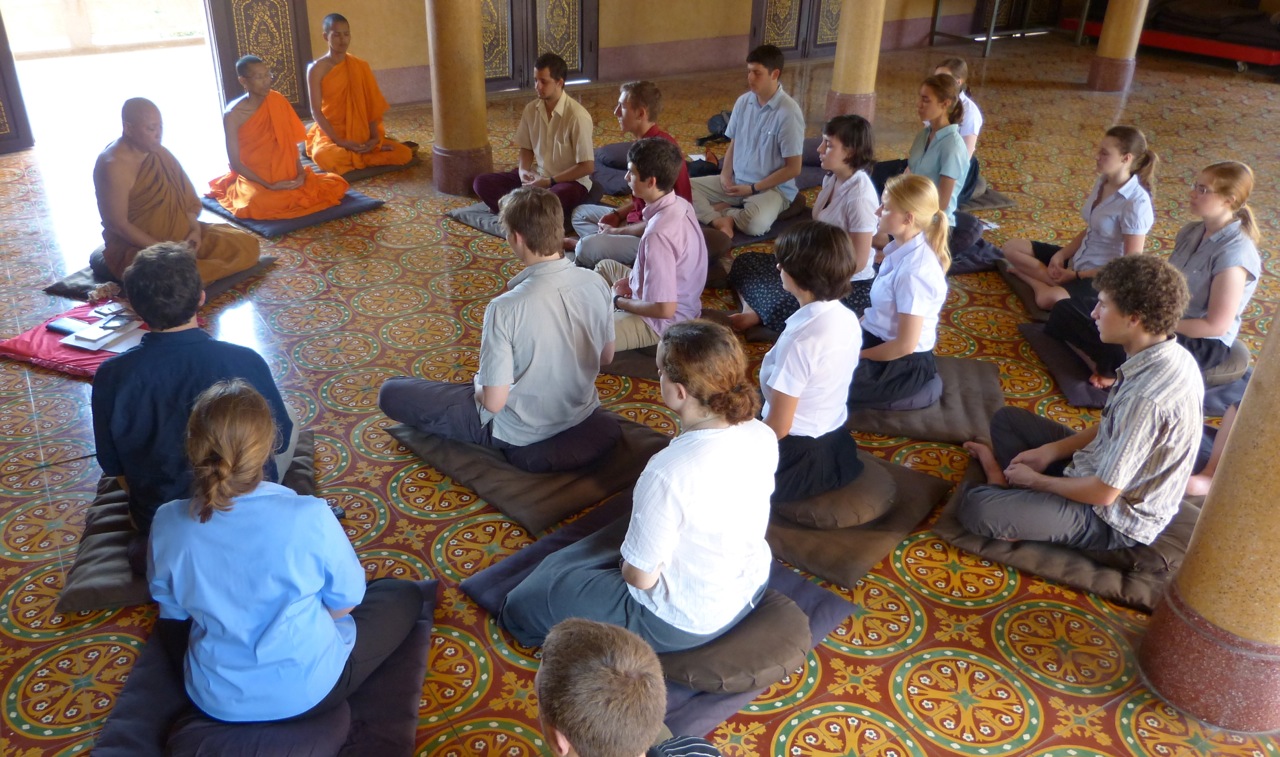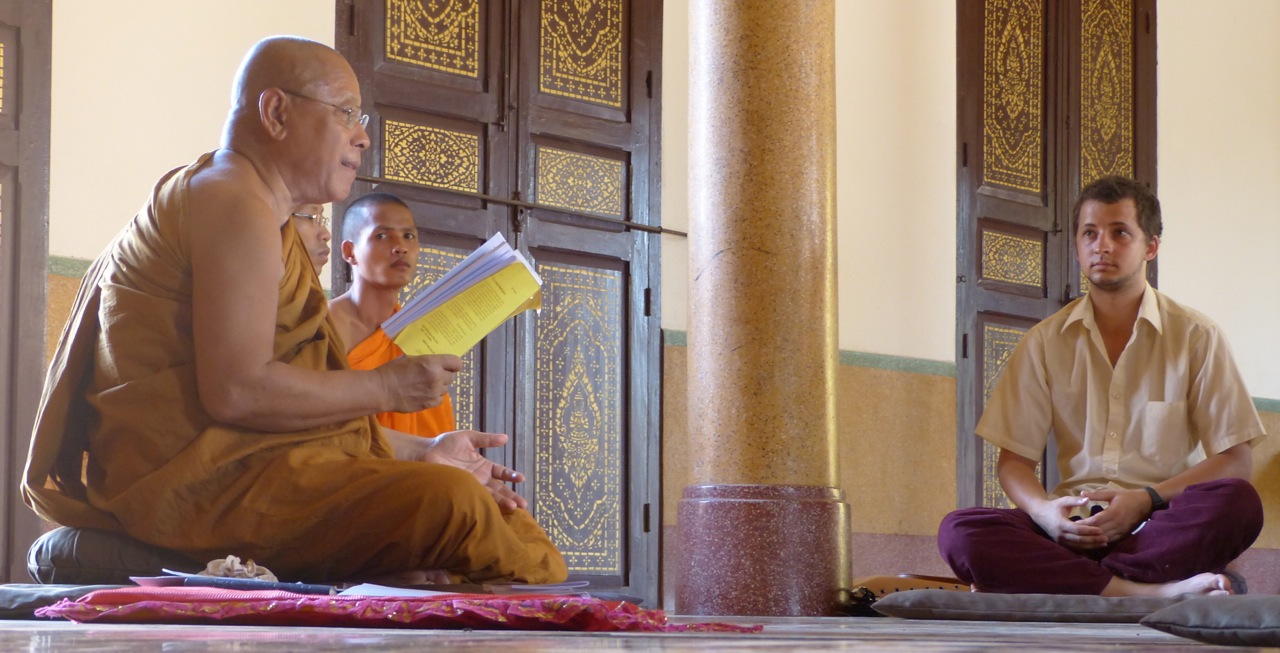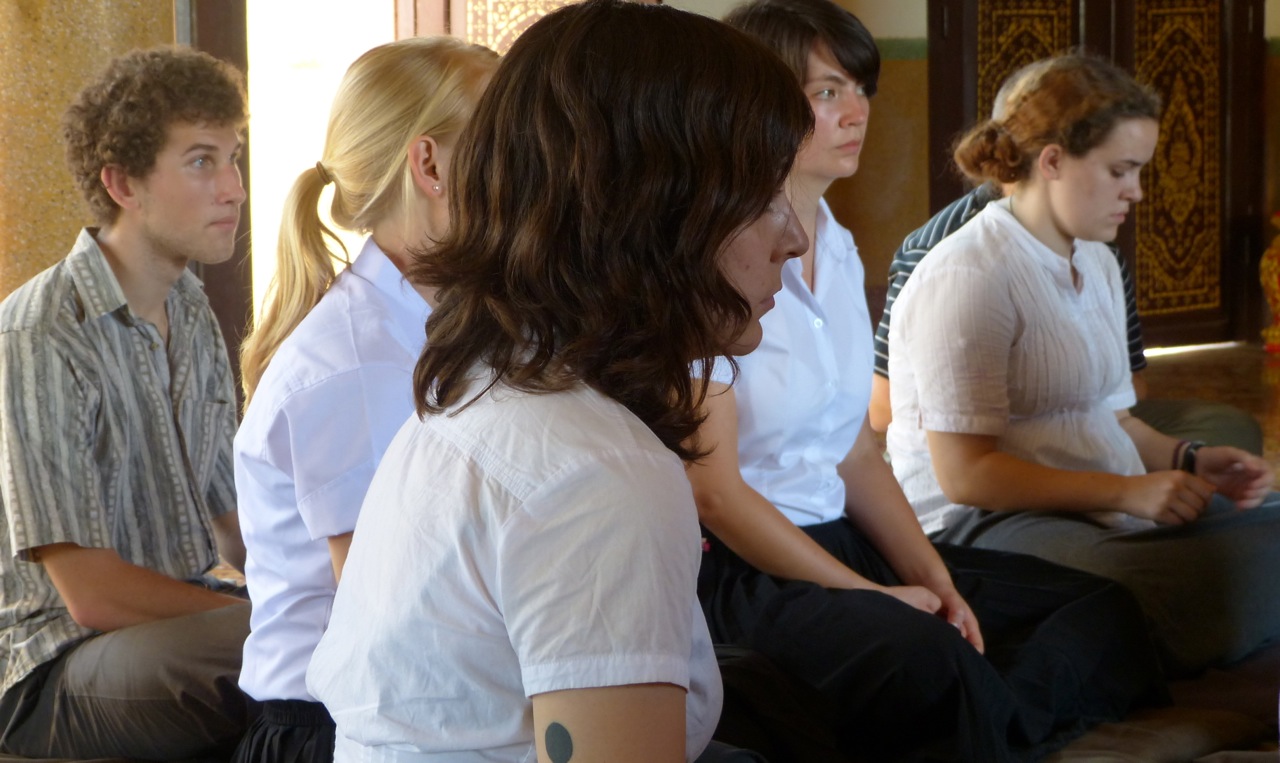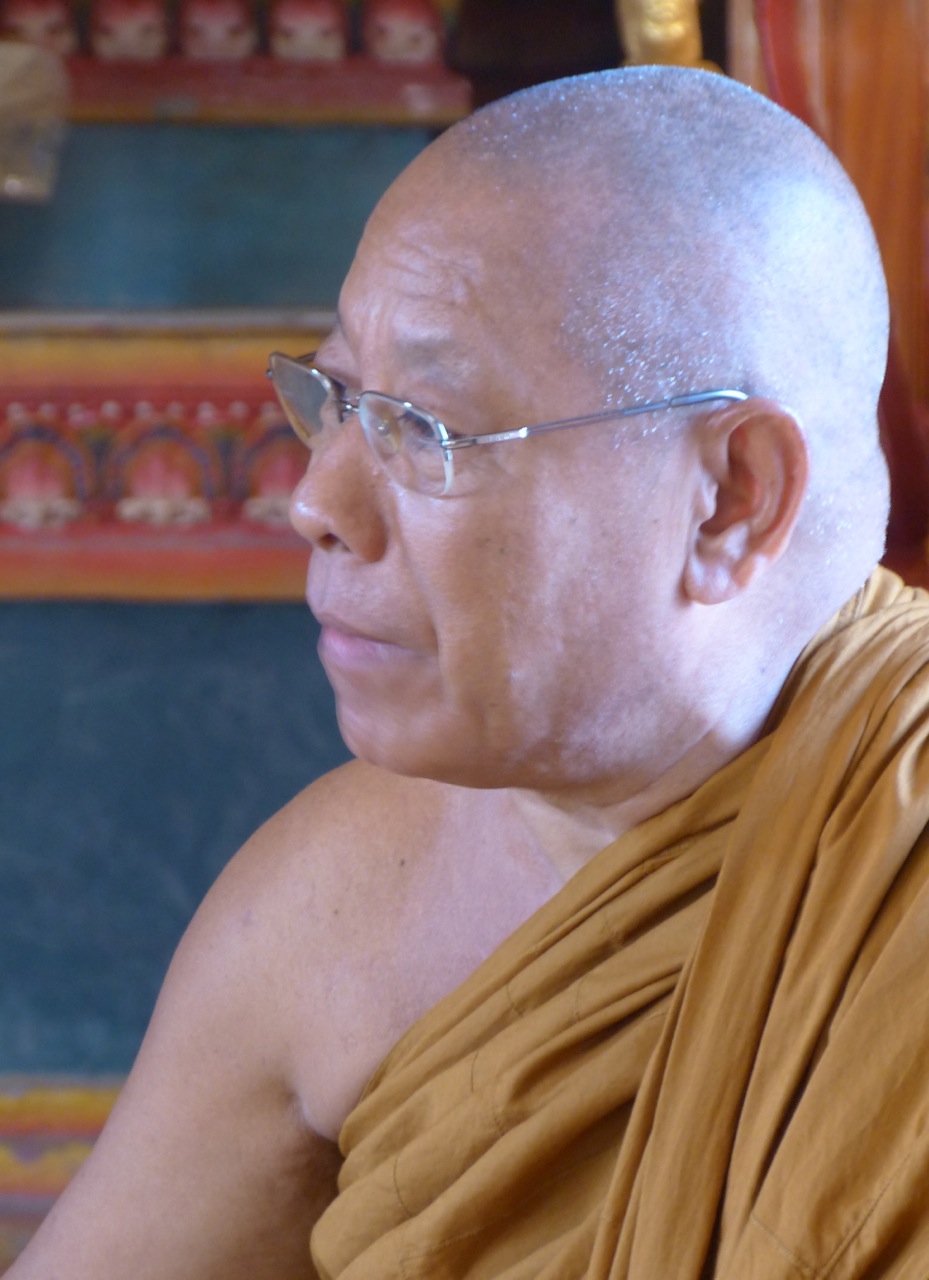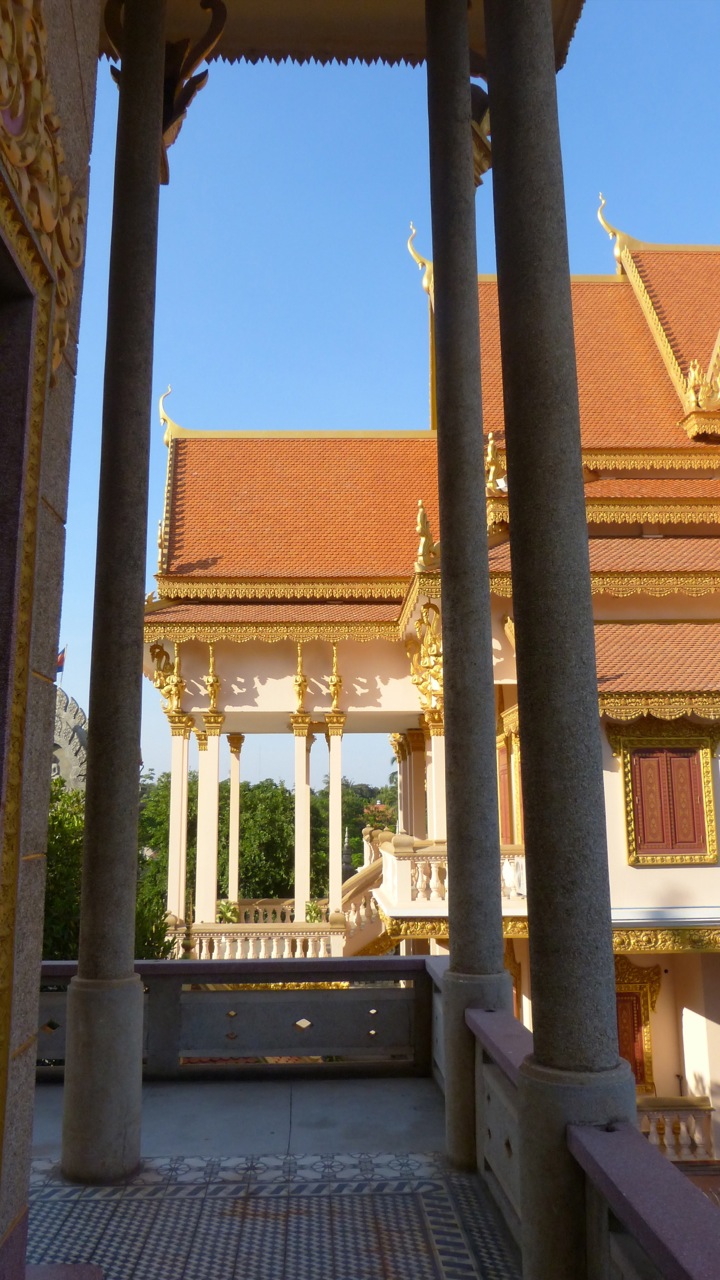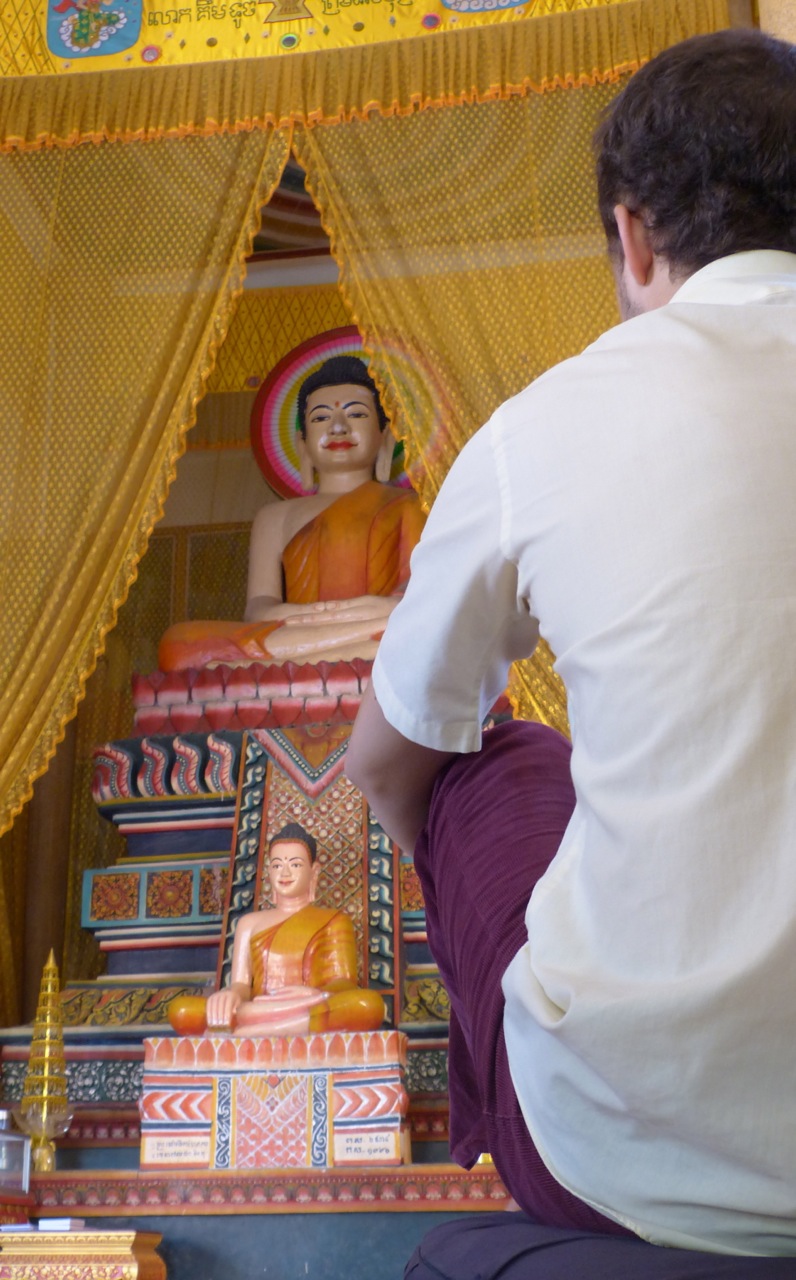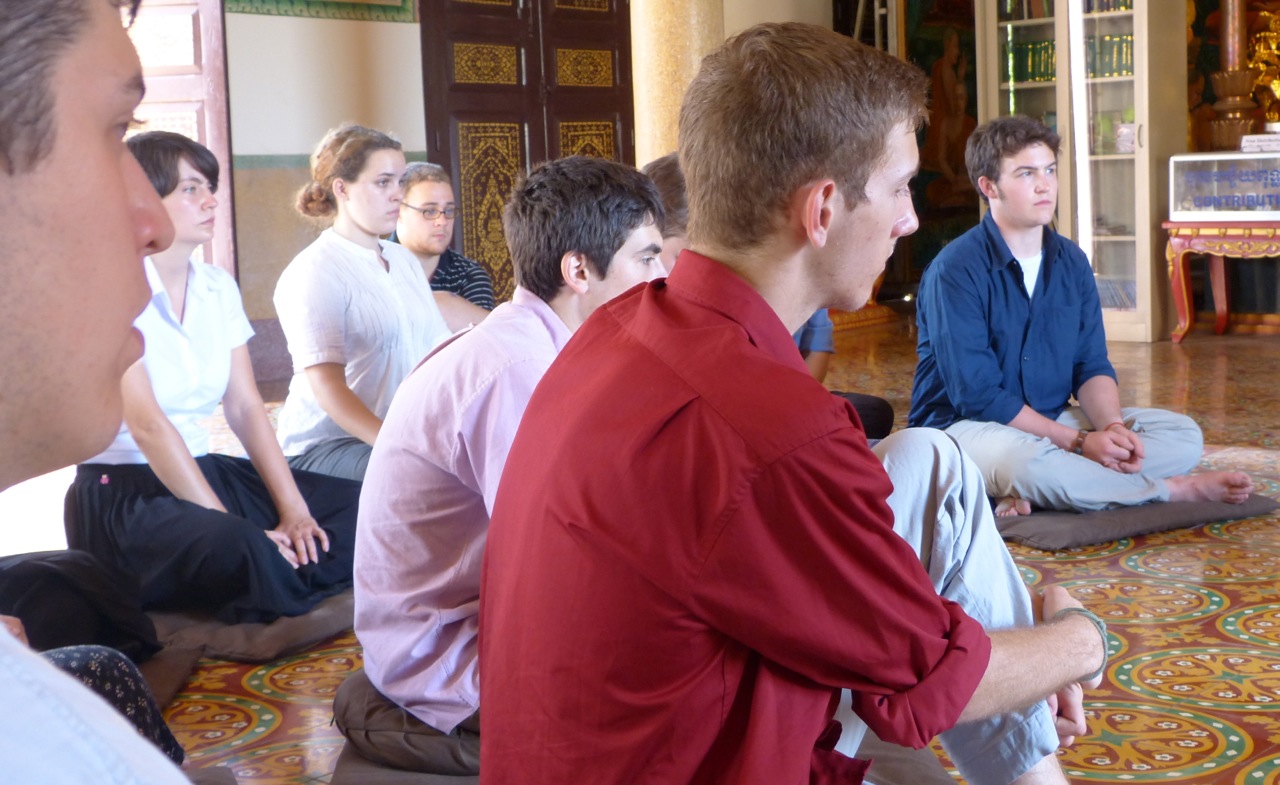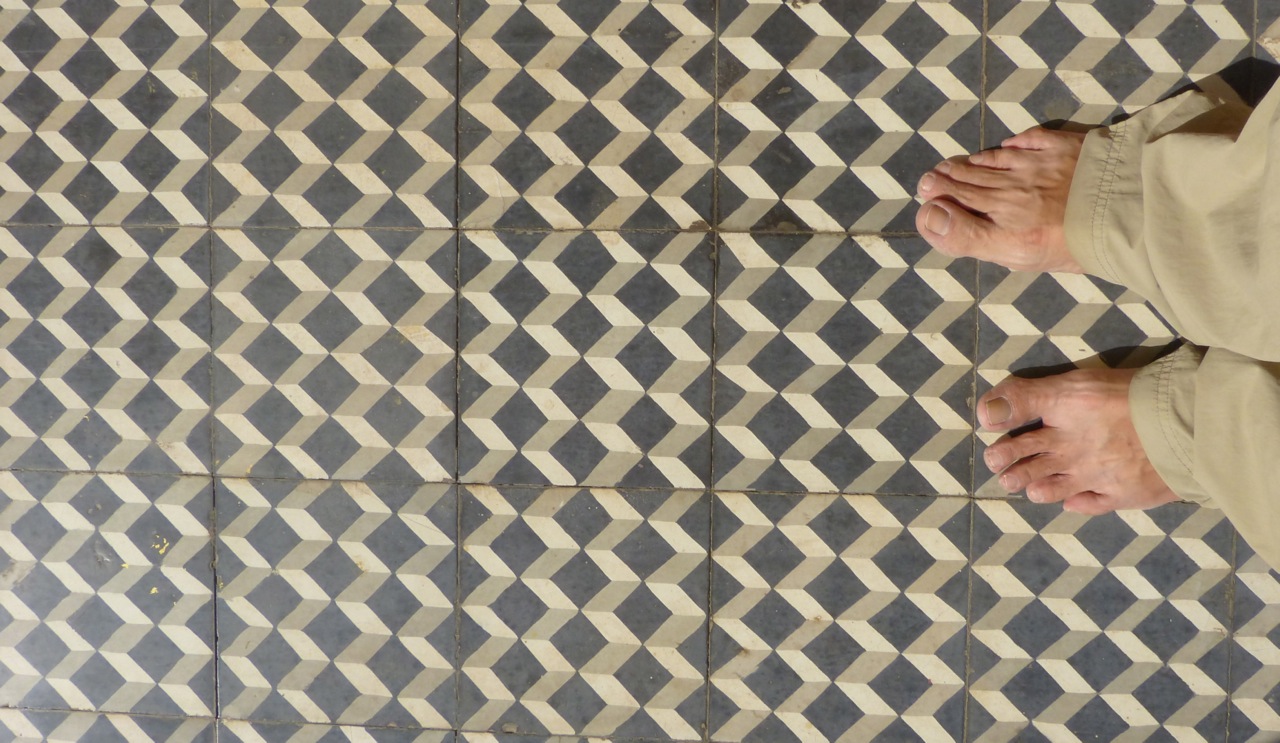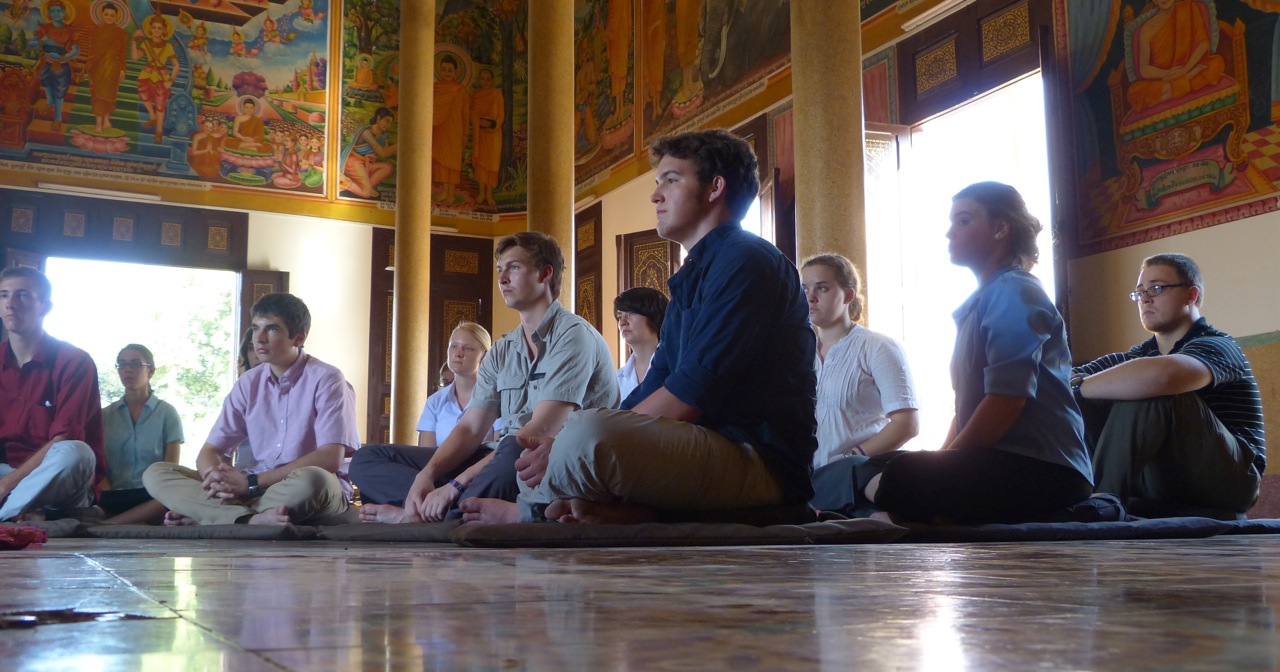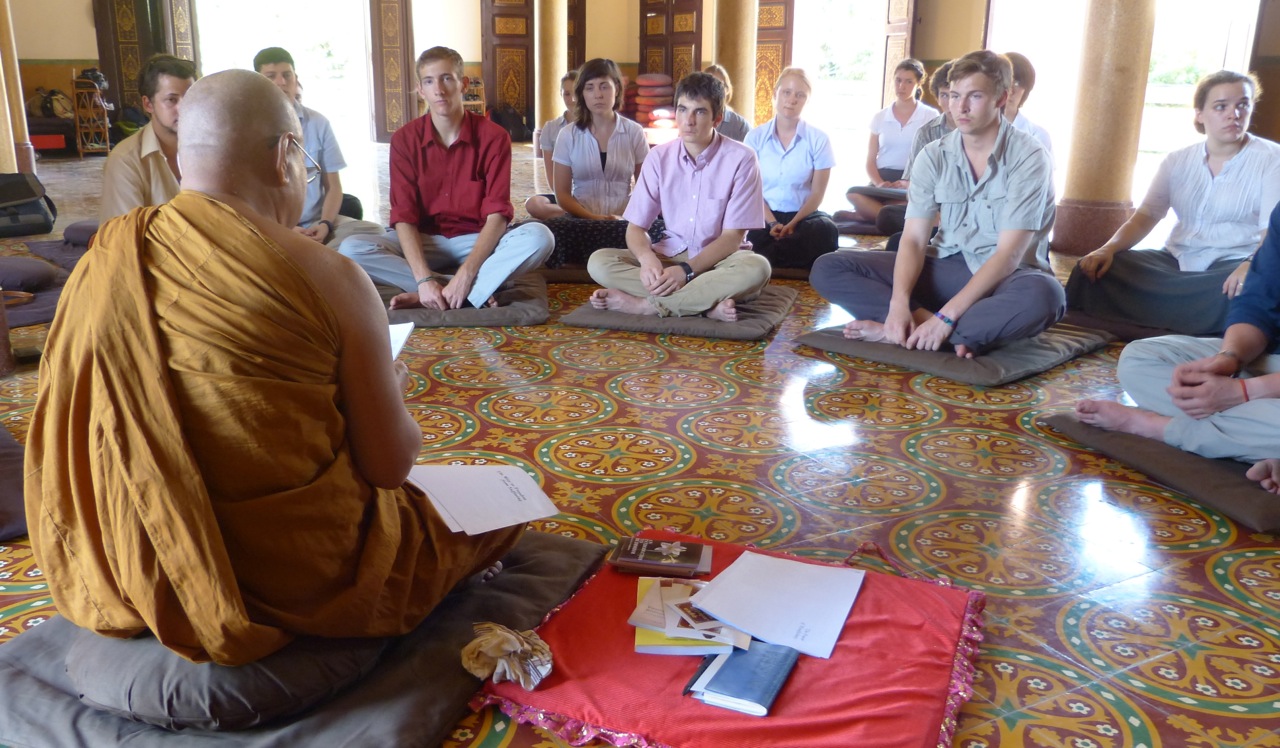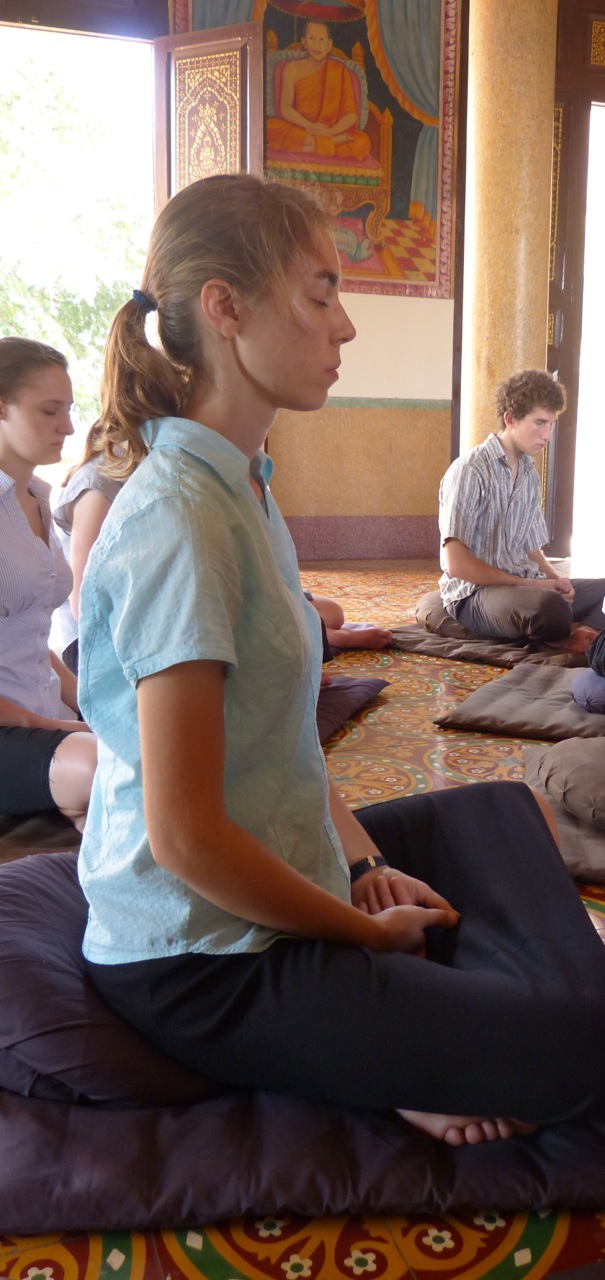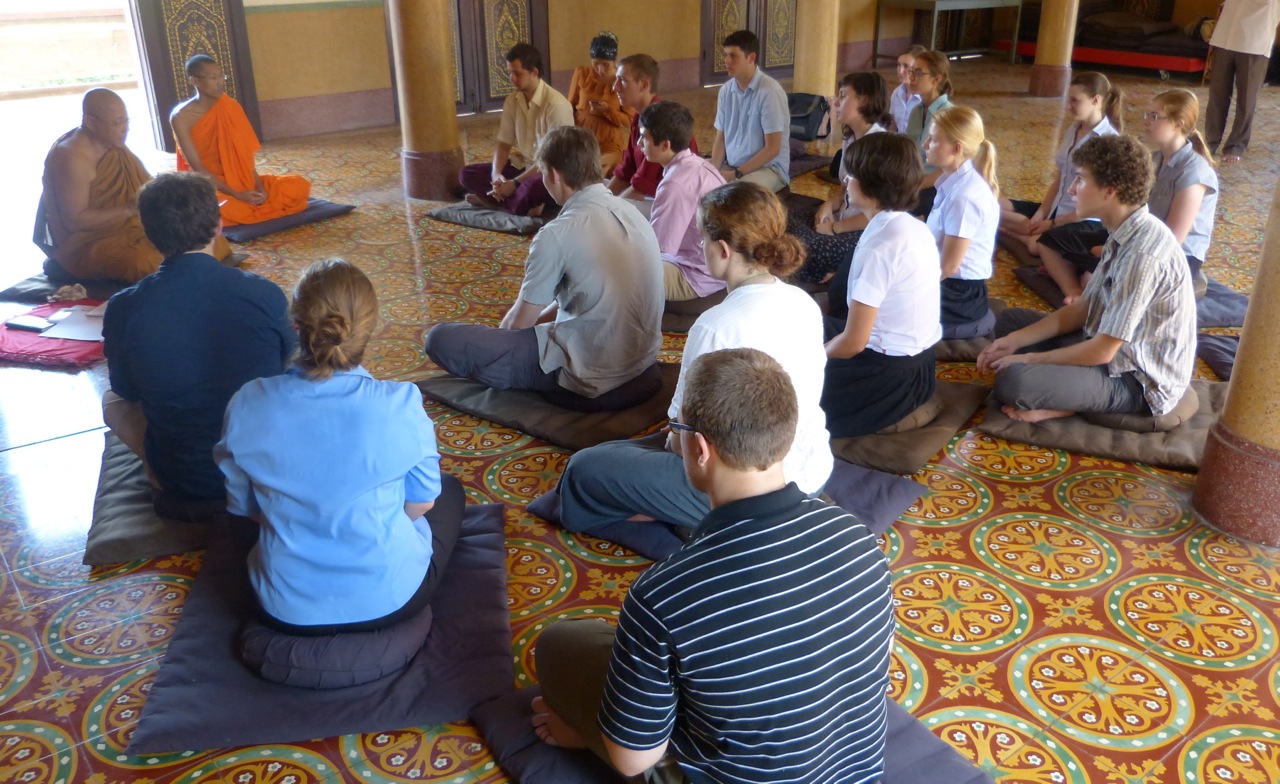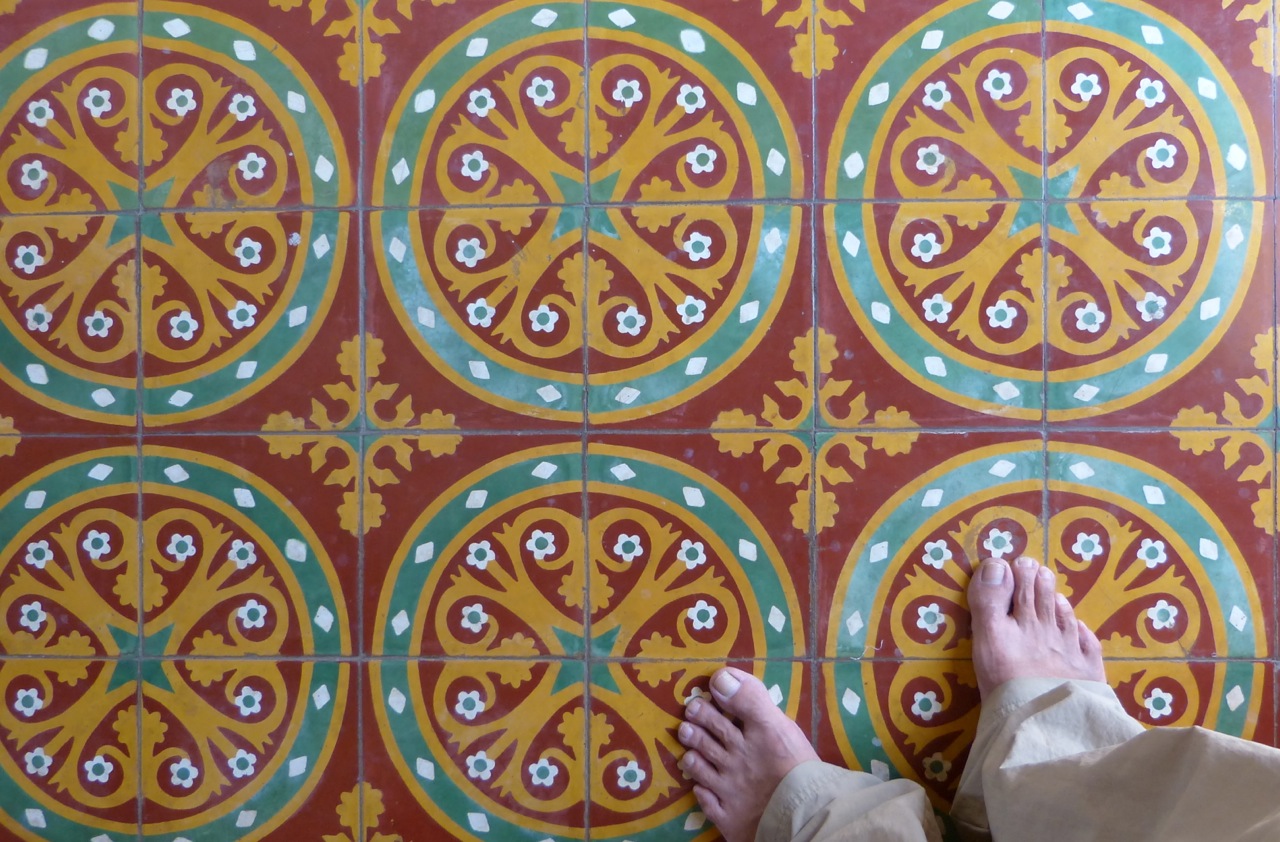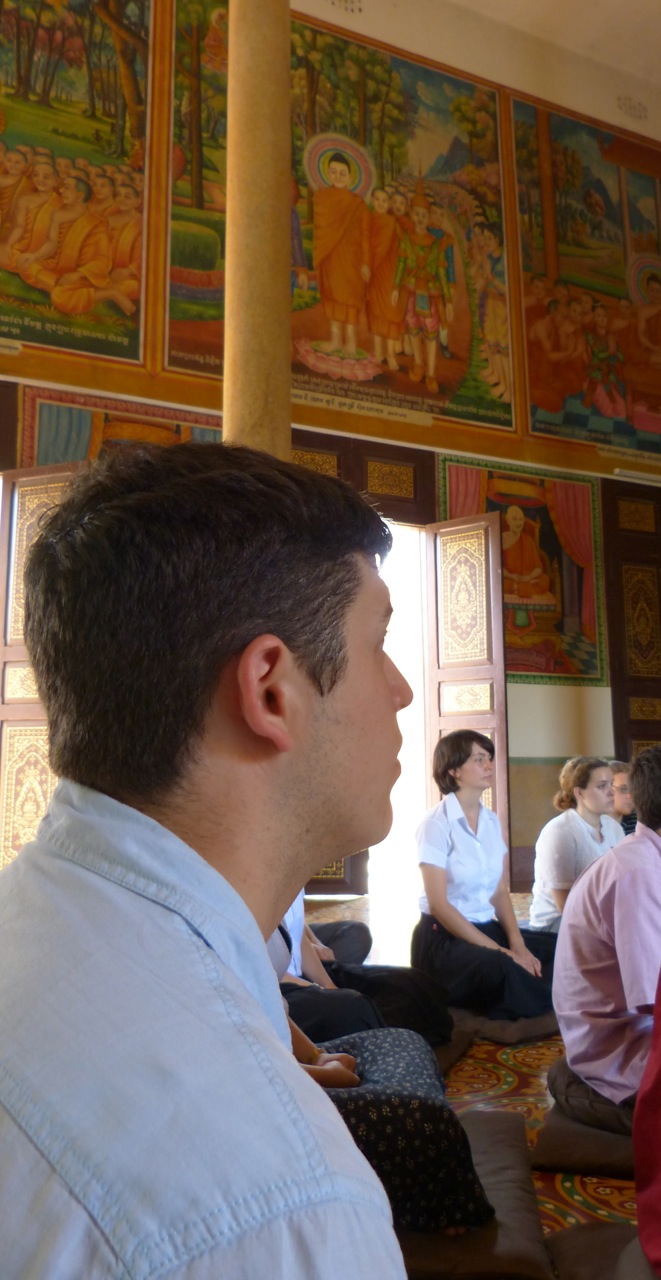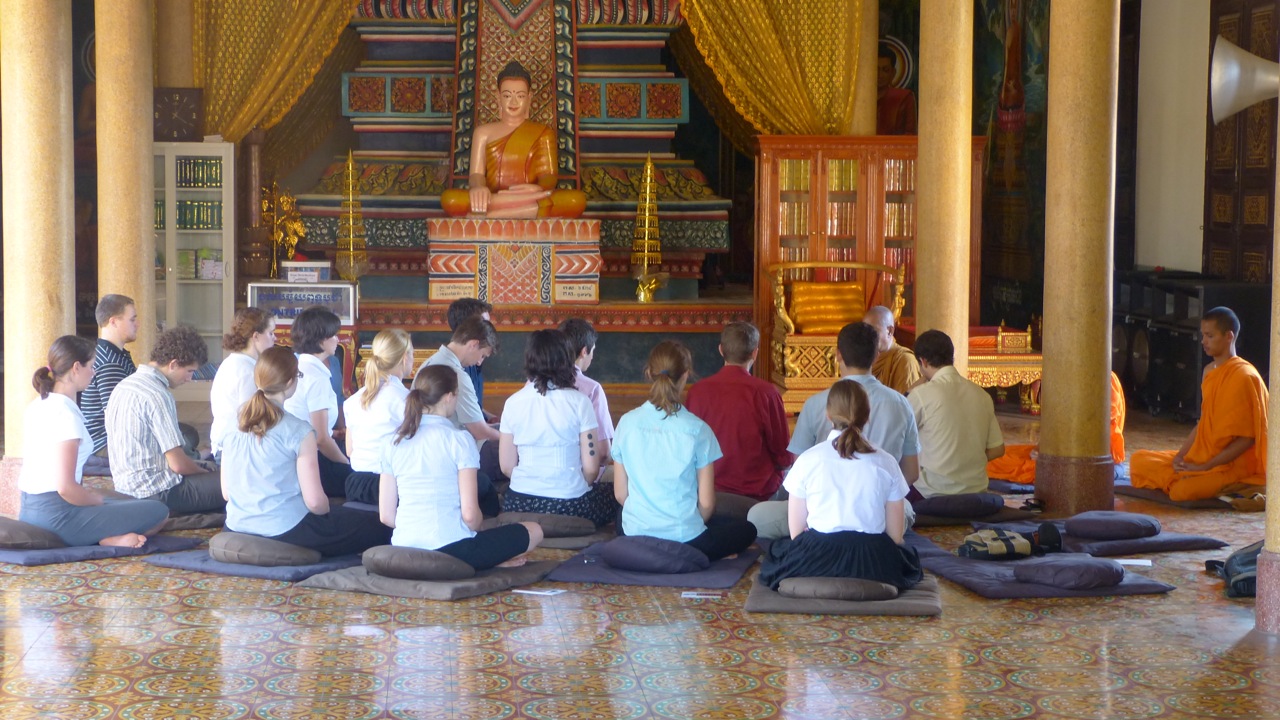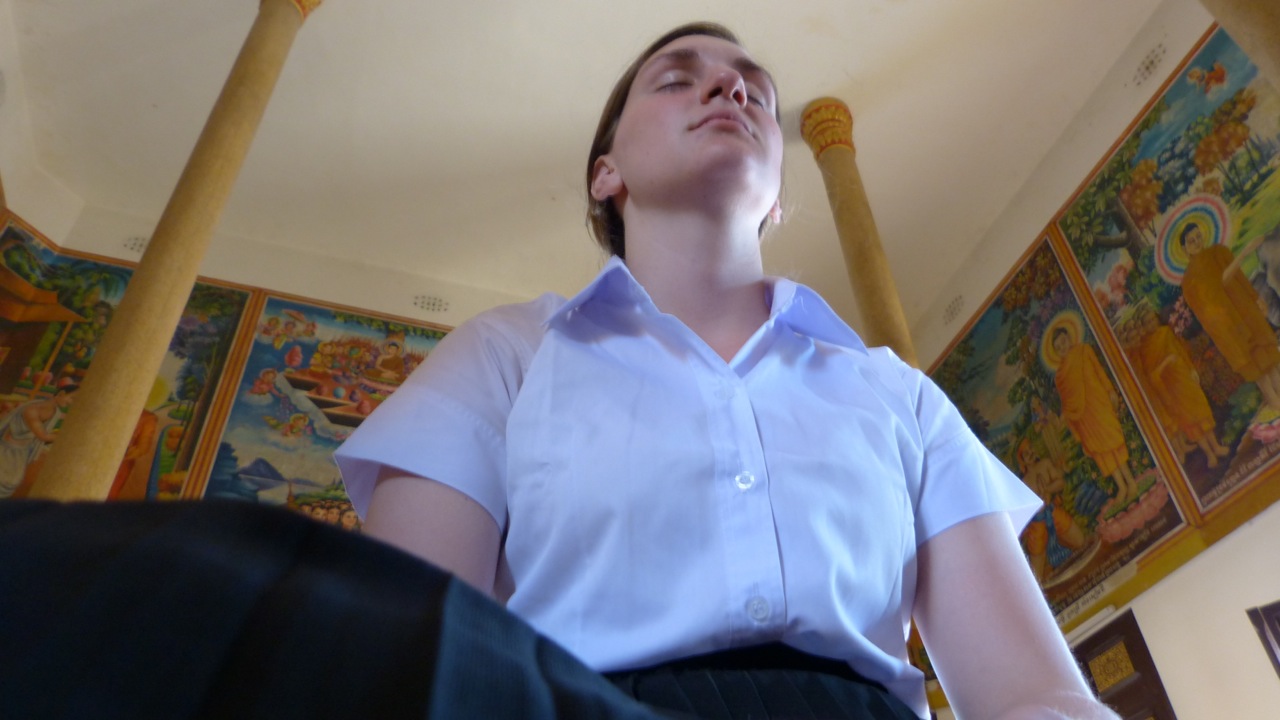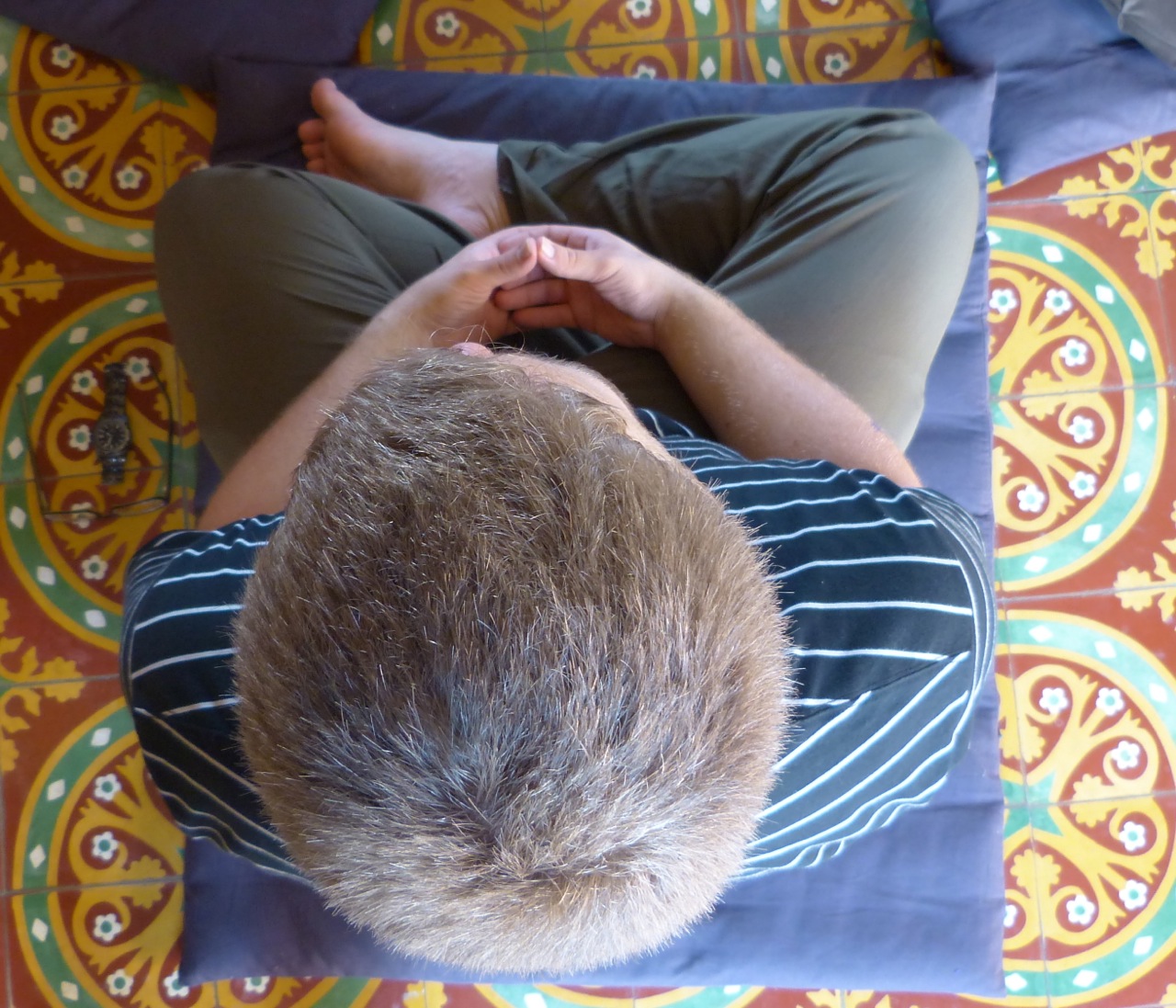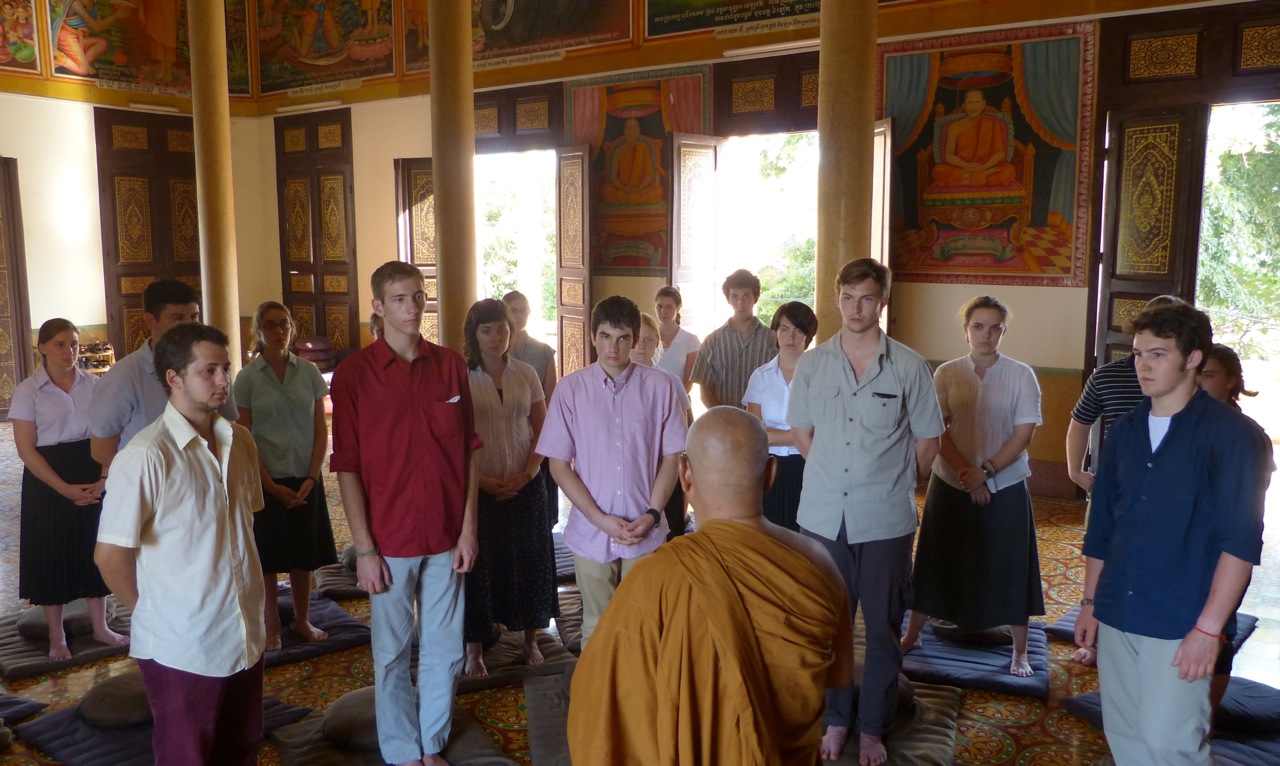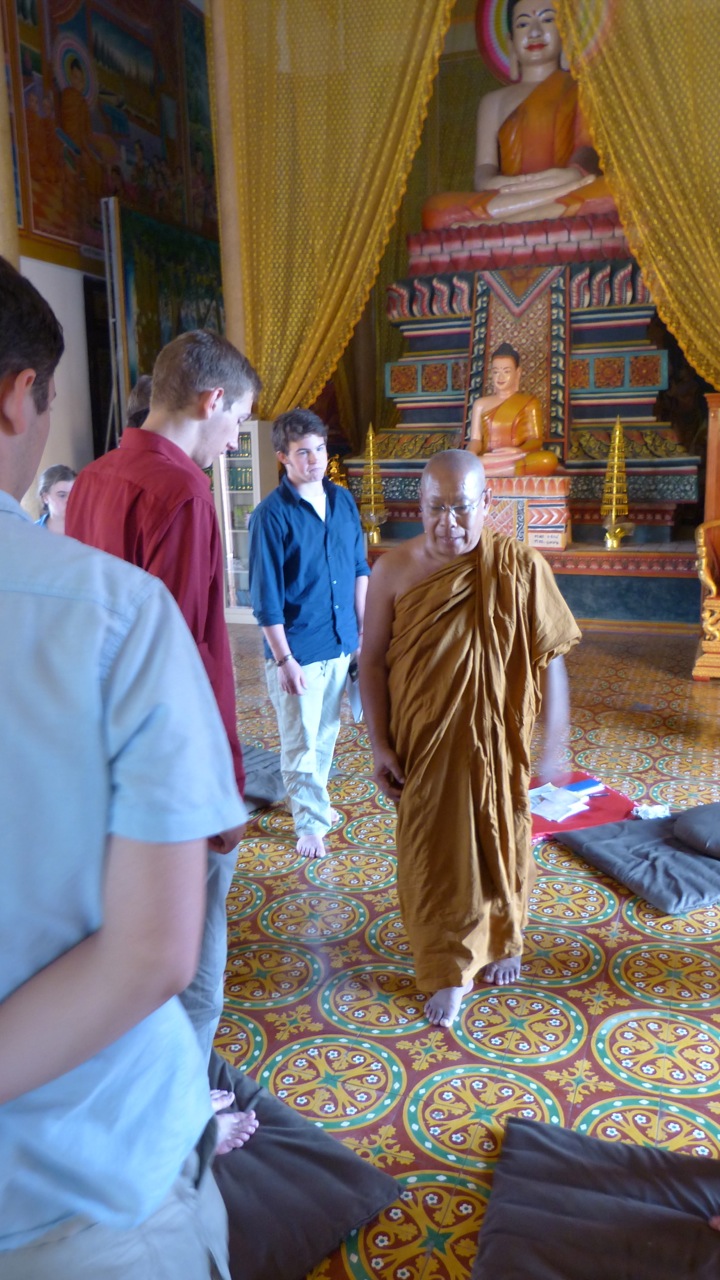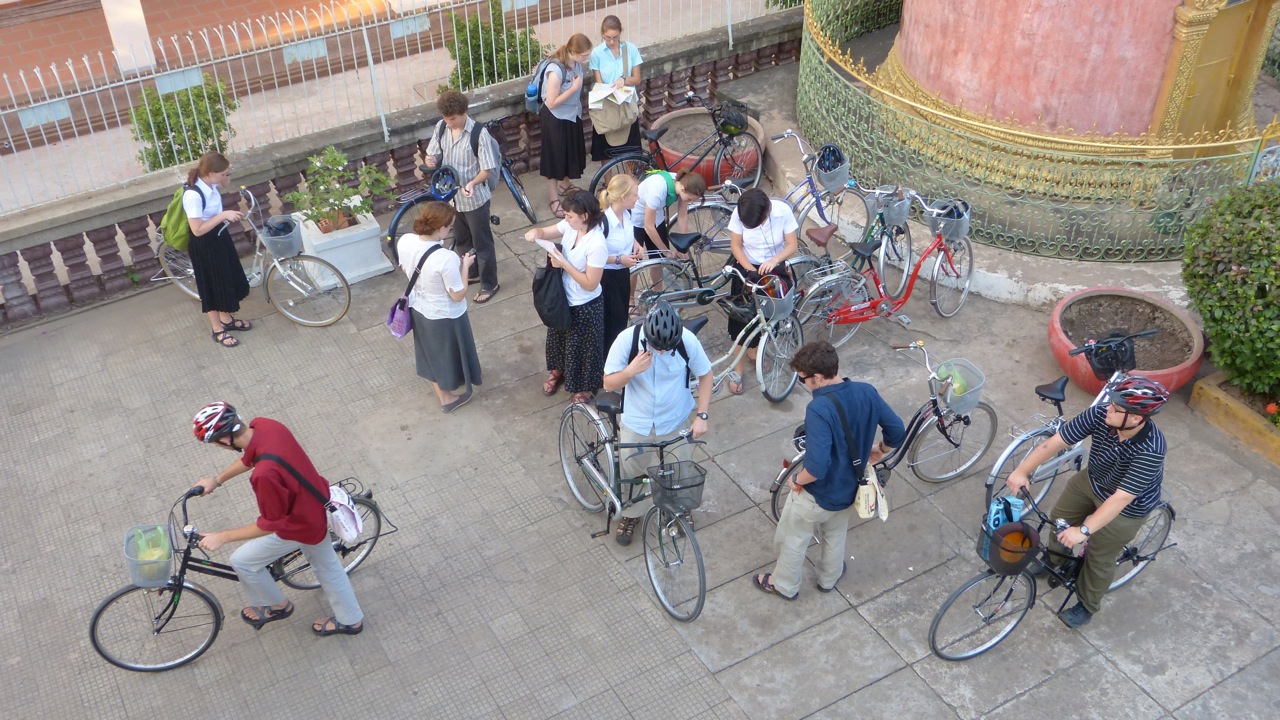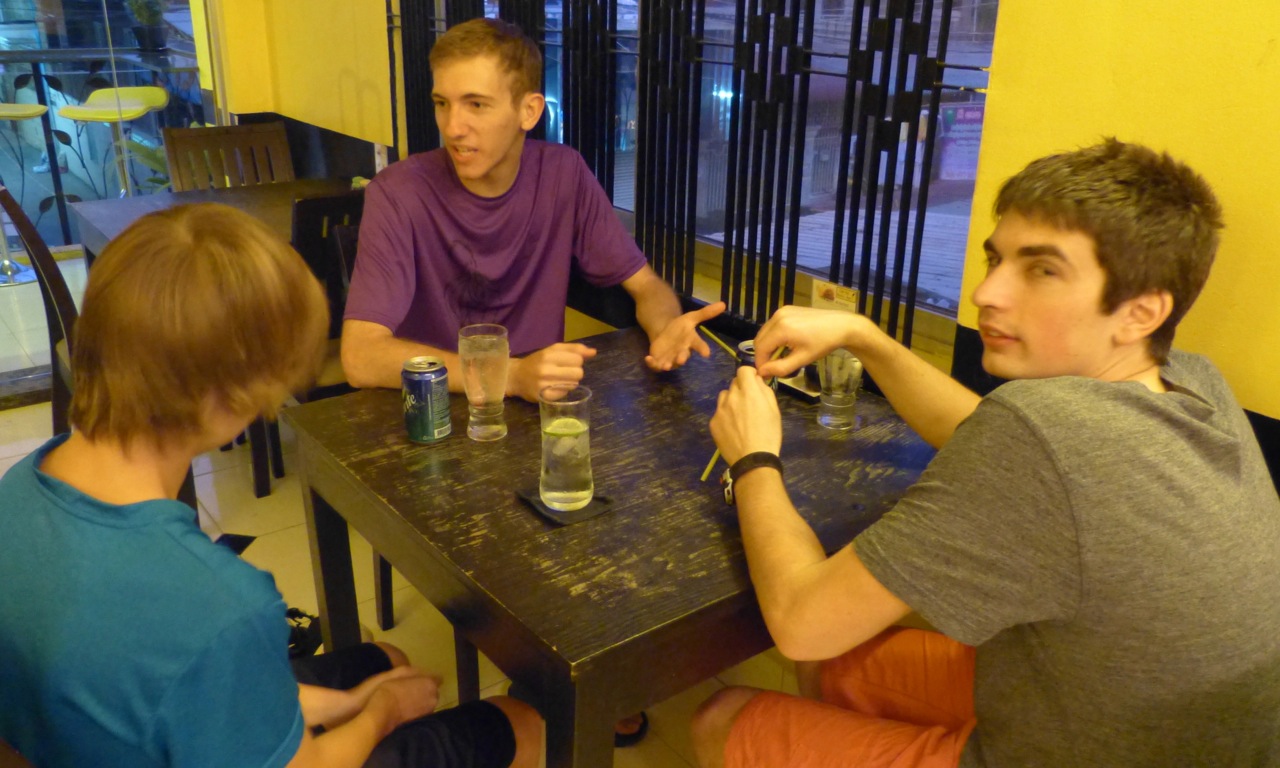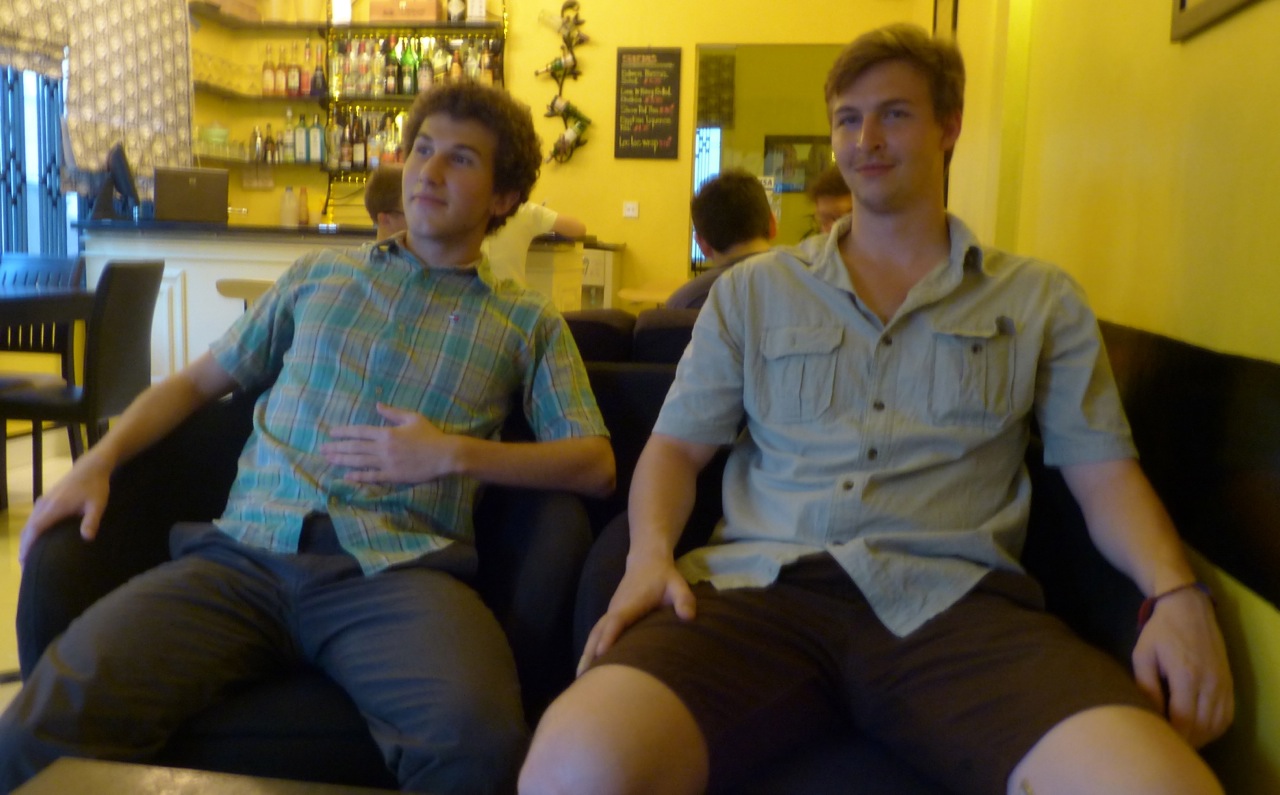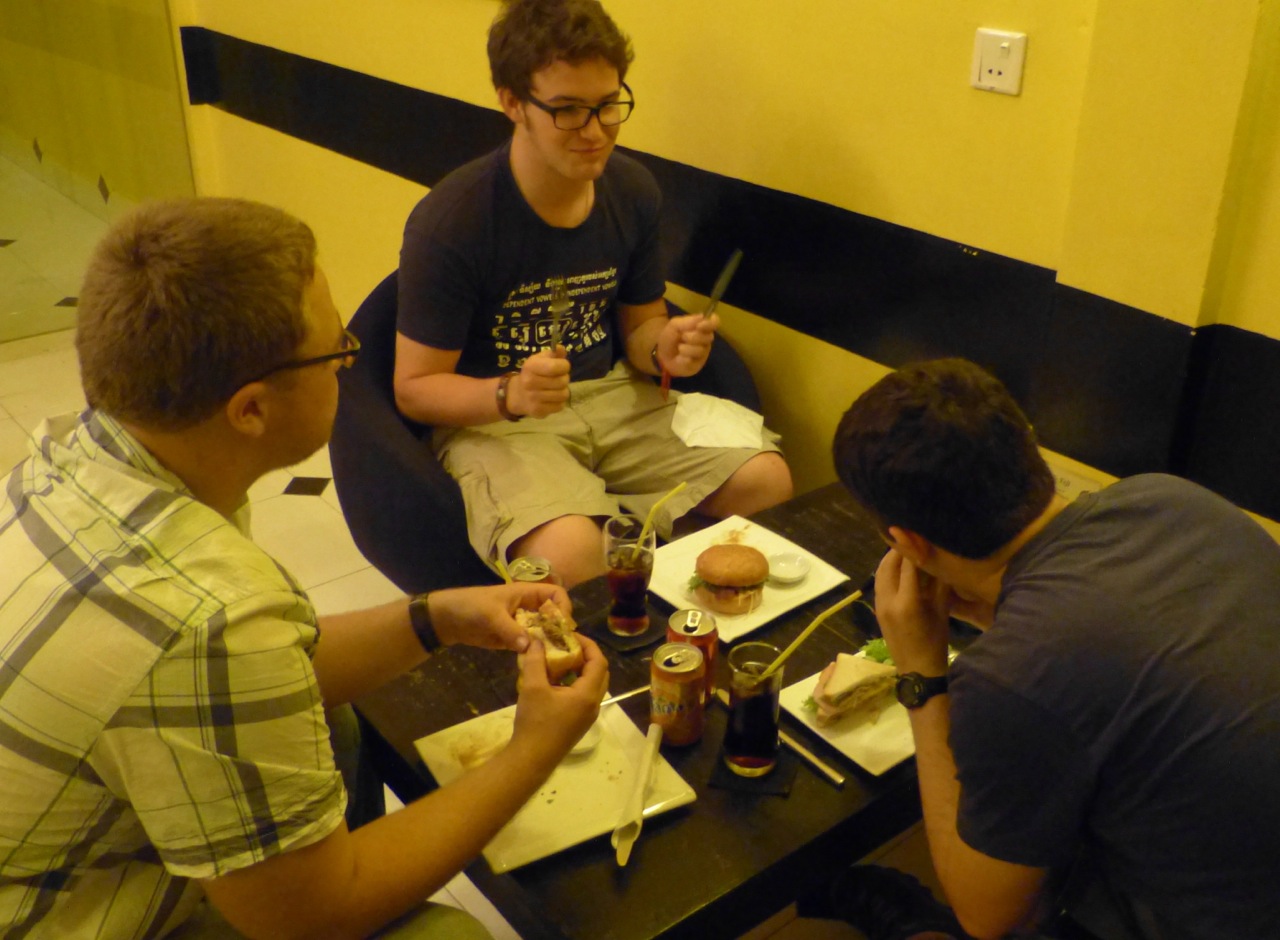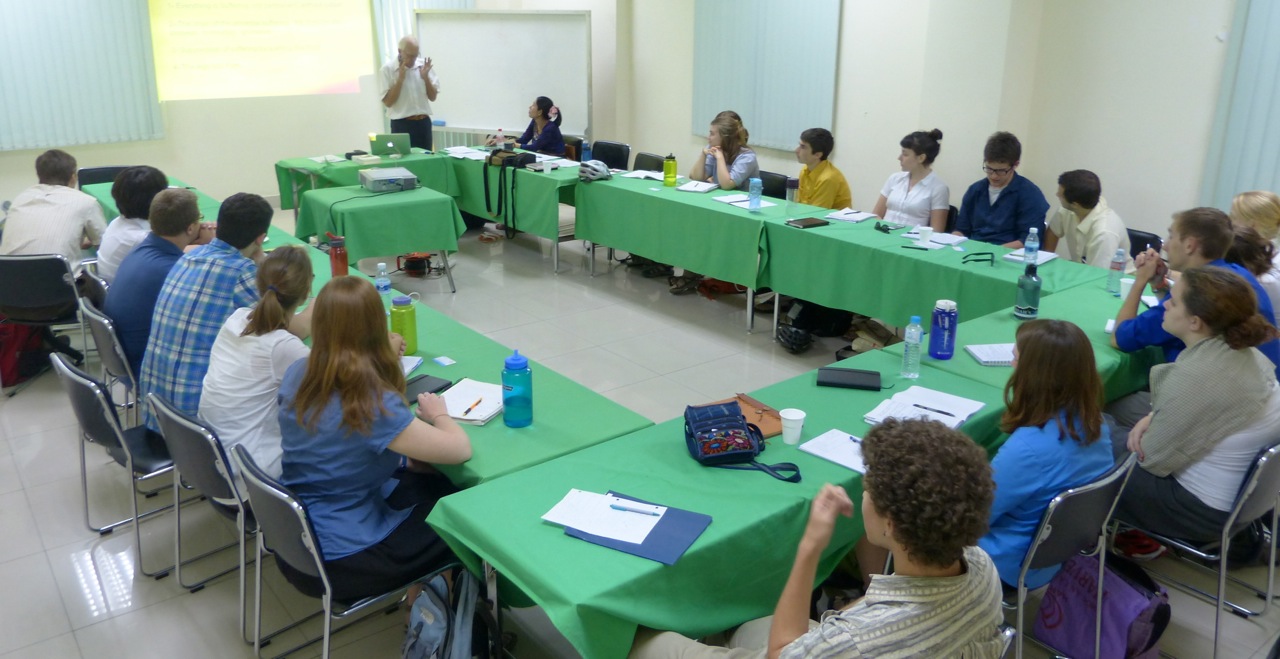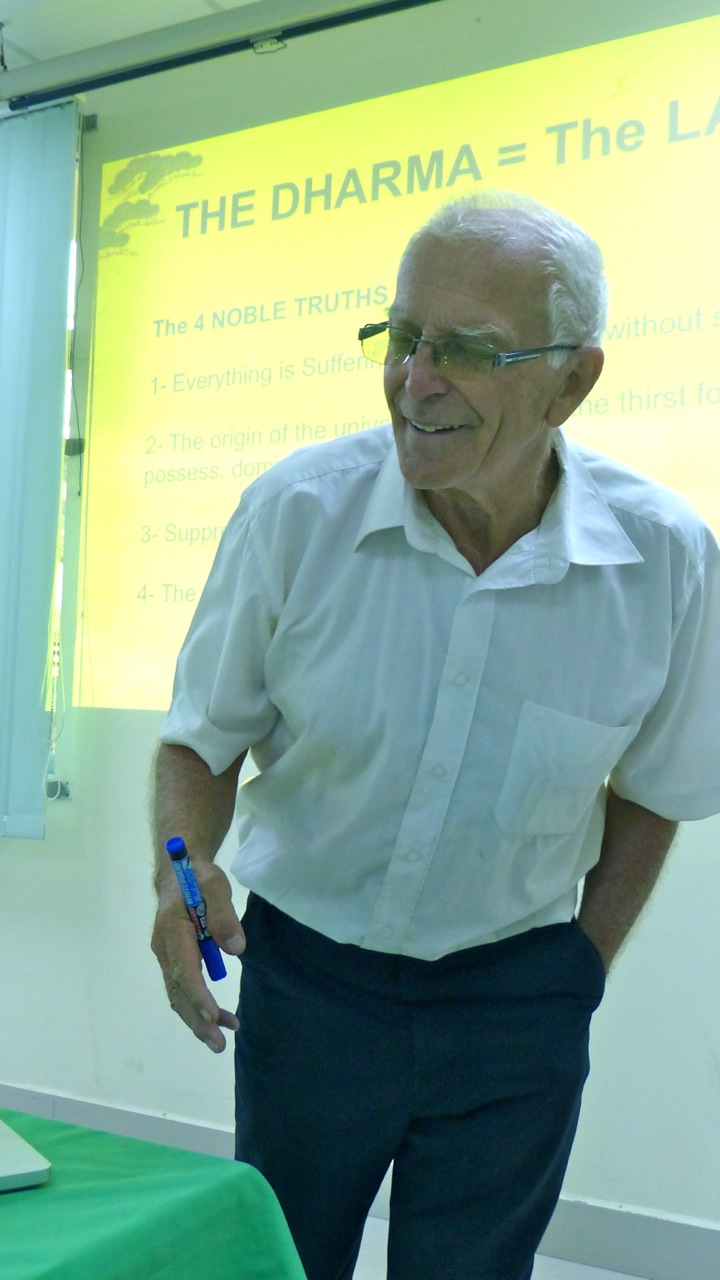Buddhist Meditation
Although this week is mostly focused on the Khmer Rouge period, we began the week Monday with a presentation on Buddhist meditative practices, led by the Venerable Yos Hut Khemacaro, one of the leading monks in Cambodia. Monk Khemacaro spoke with the group for about an hour and led us in a personal meditation.
About 96 percent of Cambodians are at least nominally Buddhist, which means having a spirit house or Buddhist shrine in or outside their homes, but this Buddhism often is blended with animist and Hindu spiritualities as well. Cambodian Buddhism is Theravada Buddhism, which is most common in Southeast Asia. Theravada Buddhism is relatively conservative, and is believed to be the oldest branch of Buddhism, with about 150 million practitioners worldwide today. In general, Buddhism is considered a wisdom-based philosophy/religion rather than a faith-based religion/philosophy (e.g., Christianity, Judaism, Islam).
During the Khmer Rouge period, all religions were abolished, and thousands of monks were killed and hundreds of wats/pagodas were destroyed, defaced, or stripped clean. Venerable Khemacaro was in France during the Khmer Rouge period, so he survived and then later returned to his homeland. While he has been a monk all of his life, many young Cambodian men become monks for only a short period of life — a year or two or three — and then return to their daily lives.
Monks wear saffron or orange robes, as you can see in the photos, and commit themselves to vows similar to Christian monks and nuns. Each morning young monks go out into the streets to gathering offerings of food or money for the support of the wat.
In our meditation, Venerable Khemacaro encouraged us to place our minds at the tip of our noses, even in our nostrils, and to empty our minds of all thoughts: to think only of the breaths going in and out. Later he introduced us briefly to “walking meditation.”
On Sunday evening the group celebrated Women’s Night Out, largely to allow the women some camaraderie of their own and to allow them to get to know Ann better. The group met at Baitong Restaurant, popular among Cambodian-run non-governmental organizations. The evening was filled with good food, laughter, and story-telling. Students took photos of that event, and we’ll post those later. Since the women were meeting on their own, the men also went out for dinner together at Cafe Yejj.
Finally, we’re including here a couple of photos of Father Francois Ponchaud, who did two of our lectures last week. Serendipitously, Father Ponchaud is scheduled to testify in the trial of Nuon Chea, also known as Brother Number 2, in the Khmer Rouge trials this week, on the very day we are at the Extraordinary Chambers in the Courts of Cambodia. Father Ponchaud has been in Cambodia since 1965, was imprisoned by the Khmer Rouge before they took over the entire country in 1975, and stayed in Cambodia for three weeks after the Khmer Rouge’s takeover, but left when all Westerners were evacuated or forced out of the country. Although the testimony may be delayed because of Nuon Chea’s temporary hospitalization, we look forward to being at the Tribunal grounds about 20 kilometers outside the city. This week we also will visit Phnom Penh’s Kiling Fields (Choeng Ek), Tuol Sleng (the S-21 prison), and the Document Center of Cambodia, which collects stories and records about Khmer Rouge atrocities.
